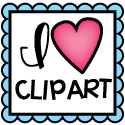My geometry standards include getting my students familiar with finding the surface area of rectangular prisms and pyramids. Thankfully, hard working teacher in lower grades spend a lot of time getting students to recognize three dimensional shapes and their attributes. After having several years of Common Core Standards under their belts, I'm finally seeing the benefits of this with my class.
One idea that I believe has really benefited my students is their understanding of how a three-dimensional shape can be turned into a 2-dimensional net. My students really need to have a strong visual of this purpose in order to find surface area. In sixth grade we don't teach formulas for surface area, we teach finding the surface area through net drawing. When I get to this unit in my curriculum, I have a series of shapes that we cut out and glue into our notebooks. These look like 2-dimensional nets when laying flat, but students also have the ability to fold them up into three-dimensional rectangular prisms and pyramids.
When I complete this activity we usually use a day or two on rectangular prisms, and a day or two on different pyramids. After students cut out the shapes, I have them find the faces, edges and vertices of each. Their ability to fold the nets into 3-dimensional shapes REALLY helps my struggling students with these concepts. We also draw a net and practice a three-dimensional shape example.
On another face we write the formulas we need to solve the problem and an explanation of HOW to solve for the surface area. This one practice in my opinion is the KEY to the entire concept, getting students to WRITE and EXPLAIN the mathematical process.
When we finish with the basics, I either give students dimensions and have them solve in their notebooks, or have them measure the shapes using a ruler (both inches-- for fraction work, and centimeters for decimals). For kicks, they also color their shapes. I mean, we all love a little math--art fun don't you agree?
To find the shapes to complete this lab, you can go {HERE} and scroll through the geometry unit to find what you are looking for. The link is to an Engage NY student packet.
Thanks for stopping by for a little Mid-Week Math Motivation. Make it a great day!

2
One idea that I believe has really benefited my students is their understanding of how a three-dimensional shape can be turned into a 2-dimensional net. My students really need to have a strong visual of this purpose in order to find surface area. In sixth grade we don't teach formulas for surface area, we teach finding the surface area through net drawing. When I get to this unit in my curriculum, I have a series of shapes that we cut out and glue into our notebooks. These look like 2-dimensional nets when laying flat, but students also have the ability to fold them up into three-dimensional rectangular prisms and pyramids.
When I complete this activity we usually use a day or two on rectangular prisms, and a day or two on different pyramids. After students cut out the shapes, I have them find the faces, edges and vertices of each. Their ability to fold the nets into 3-dimensional shapes REALLY helps my struggling students with these concepts. We also draw a net and practice a three-dimensional shape example.
On another face we write the formulas we need to solve the problem and an explanation of HOW to solve for the surface area. This one practice in my opinion is the KEY to the entire concept, getting students to WRITE and EXPLAIN the mathematical process.
When we finish with the basics, I either give students dimensions and have them solve in their notebooks, or have them measure the shapes using a ruler (both inches-- for fraction work, and centimeters for decimals). For kicks, they also color their shapes. I mean, we all love a little math--art fun don't you agree?
To find the shapes to complete this lab, you can go {HERE} and scroll through the geometry unit to find what you are looking for. The link is to an Engage NY student packet.
Thanks for stopping by for a little Mid-Week Math Motivation. Make it a great day!































